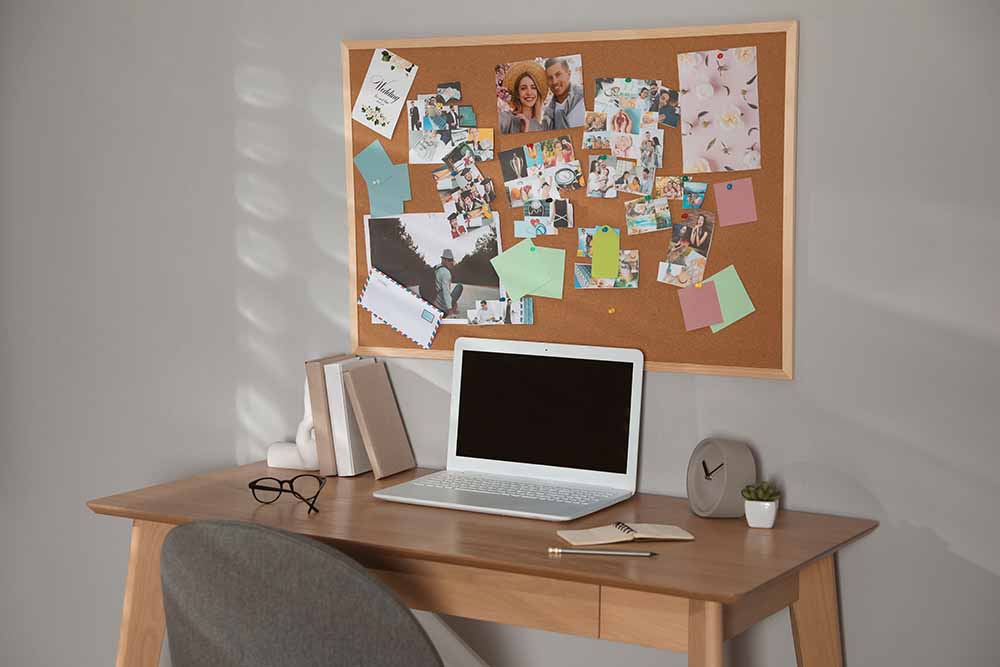Each of us has a set of aspirations and goals, some big, some small. No matter how insignificant, we take immense pride and joy in achieving these goals.
Of course, there are elements such as hard work, smart thinking and luck, which play an important role. But alongside, there’s also a tool that helps us manifest our deepest desires, and can actually help make them a reality!
Make the journey between ‘dreaming and achieving’ more interesting by creating a vision board.
For those of you who don’t know what a ‘vision board’ is, it’s a great way to remind yourself about your goals. It also helps you keep the focus without getting distracted. ; With an effective vision board, there will be no room for negative thoughts to deter you from getting closer to your aims. Every time the mind wavers or one feels demotivated, a vision board helps us go back to the starting point - ‘Why do we want this, and how much?’.
Interestingly, many experts say that creating a vision board enables us to manifest both our personal and professional goals. The visual representation makes our sub-conscious mind start believing and living that dream, which in turn makes it all come true. The philosophy is that everything depends on our in-depth beliefs, which leads to the manifestation of our ideas - both positive or negative.
In fact, a mind that often succumbs to negative thinking could also potentially start thinking positively after trying out this tool. This is because it helps exercise the brain cells every moment to believe that the visuals are real.
Before trying to understand how to create the right vision board, it’s also very important to know what benefits it brings to the table. –Among these are clarity of vision, constant visualisation of one’s goals, motivation, positivity, growth in creativity, inspiring oneself, and bonding with any counterparts that share similar goals.
If you’re a beginner, here are some steps to follow in order to create the right vision board:
1. Ensure You Have Clarity Vision: What do we want and why? This clarity is extremely important to begin the process. There should be no vagueness and ambiguity.
2. Choose The Right Medium: You can use a white board, canvas, scrapbook, journal, photo album, wire board, foam board or even a poster board. If you’re making a digital vision board,– Canva or PowerPoint are good options to begin with.

3. Collect Appropriate Materials: Try using as many images from photo albums, postcards stamps or even stickers as possible. Support materials can include coloured pens, chalk, stencils, markers, scissors, cutters, erasers, washi tapes, adhesives, glue sticks and so on.
4. Opt For Images That Resonate With Your Goals: Let’s say you want to graduate from a certain university. Your vision board should ideally showcase a photo with graduation caps, the stamp of that country, and a generic convocation certificate. Similarly, if you want to become a professional footballer, your mood board could have trophies from important football tournaments and footballers playing on the field.

5. Prioritise Photos: Place the most relevant photos in the centre, or in a prominent space which draws your focus instantly. The supporting pictures or materials can be placed around these.
6. Position The Vision Board: This is a very important aspect. Keep the vision board where you have the optimum access to it, in a place where it can’t go out of sight.

7. Update The Vision Board Regularly: Adapt and be flexible enough to keep adding or modifying your vision board.. We are constantly evolving and growing as people, and our goals and aspirations can also change accordingly.
8. Be Open To Making A New Vision Board: It’s completely fine if there has been a drastic change of plans. Set aside your existing vision board entirely, and come up with a brand new one to reflect your new desires.
As per science, using images and phrases that inspire you can increase your motivation by thinking big. Vision boards can truly help make your dreams a reality. By reminding yourself of your life goals on a regular basis, start becoming more intentional and full of conviction. Eventually, you can direct your daily actions toward a greater purpose or goal.